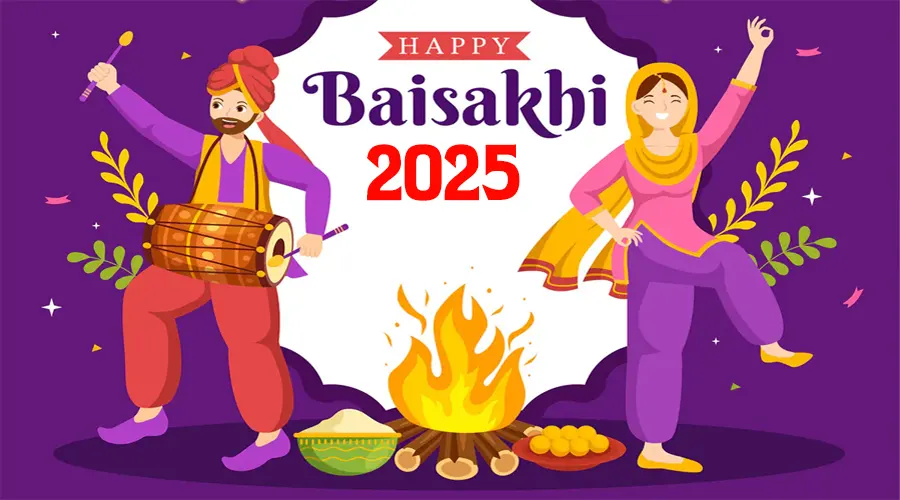Baisakhi 2025: Significance, Celebrations, and Traditions of the Harvest Festival
Baisakhi, also known as Vaisakhi, is one of the most vibrant and significant festivals celebrated in India, especially in Punjab. It marks the beginning of the harvest season and holds immense religious importance for Sikhs and Hindus alike. The festival is observed with great zeal and enthusiasm across India, symbolizing prosperity, gratitude, and new beginnings.
Date and Time of Baisakhi 2025
Baisakhi is celebrated every year on April 13 or April 14, depending on the solar calendar. In 2025, Baisakhi will be celebrated on April 13.
Historical and Religious Significance of Baisakhi
Baisakhi holds historical, religious, and cultural significance:
1. Sikh Significance
- Baisakhi marks the foundation of the Khalsa Panth in 1699 by Guru Gobind Singh Ji, the tenth Sikh Guru.
- On this day, Guru Gobind Singh Ji initiated the Panj Pyare (Five Beloved Ones), establishing the Sikh identity and promoting equality, courage, and selfless service.
- Sikhs visit Gurdwaras, participate in Nagar Kirtans, and engage in Seva (selfless service) to commemorate this sacred occasion.
2. Hindu Significance
- Baisakhi is observed as the Hindu Solar New Year in various states, including Punjab, Haryana, Himachal Pradesh, and Uttar Pradesh.
- It is also celebrated as Rongali Bihu in Assam, Pohela Boishakh in Bengal, Puthandu in Tamil Nadu, and Vishu in Kerala, marking the new year in different regional calendars.
3. Agricultural Importance
- In Punjab and northern India, Baisakhi is a harvest festival, celebrating the ripening of rabi crops.
- Farmers express their gratitude to God for a bountiful harvest and pray for prosperity in the coming year.
How is Baisakhi Celebrated?
Baisakhi is celebrated with colorful festivities, traditional music, and spiritual gatherings. Some of the key highlights include:
1. Gurdwara Prayers and Processions
- Devotees visit Gurdwaras for prayers, kirtans, and langars (community feasts).
- Nagar Kirtans (holy processions) are organized, where Sikhs chant hymns and carry the Guru Granth Sahib (Sikh holy scripture) on a beautifully decorated palanquin.
2. Fairs and Cultural Performances
- Traditional Baisakhi fairs are held across Punjab, featuring folk music, dance performances, and delicious food stalls.
- The energetic Bhangra and Gidda dance performances add to the festive spirit, symbolizing joy and gratitude.
3. Agricultural Festivities
- Farmers celebrate by decorating their fields, preparing traditional Punjabi cuisine, and organizing bullock cart races.
- The festival also marks the start of new business ventures and financial planning in many communities.
Regional Variations of Baisakhi
Baisakhi is celebrated under different names across India:
- Rongali Bihu – Assam
- Pohela Boishakh – West Bengal
- Puthandu – Tamil Nadu
- Vishu – Kerala
Traditional Foods of Baisakhi
No celebration is complete without delicious food, and Baisakhi is no different Some traditional dishes include:
- Makki di Roti and Sarson da Saag
- Lassi (sweet or salty yogurt drink)
- Pindi Chole (spiced chickpeas)
- Kada Prasad (holy offering from Gurdwaras)
- Kesari Kheer (saffron rice pudding)
Conclusion
Baisakhi is more than just a festival; it is a celebration of culture, spirituality, and gratitude. Whether you partake in religious prayers, enjoy the festive fairs, or join the lively dance performances, Baisakhi brings communities together in unity and joy.
Let’s celebrate Baisakhi 2025 with love, laughter, and gratitude for the blessings of life!
Wishing you a Happy and Prosperous Baisakhi!


Comments (0)